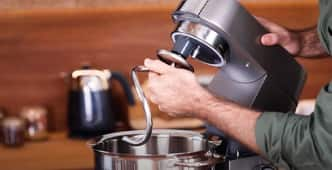How to Make Fresh Pasta at Home
There’s something quite special about making your own homemade pasta. While the option of dried (store-bought) pasta is never a bad one, there’s nothing that quite gives the same experience of creating fresh pasta from scratch.
This guide introduces you to the world of fresh pasta, providing you with the ingredients and methods required, plus information on storing, cooking and answers to some common questions. We have also provided a selection of delicious recipes you can try yourself, allowing you to experiment with your pasta making once you’ve mastered the basics.
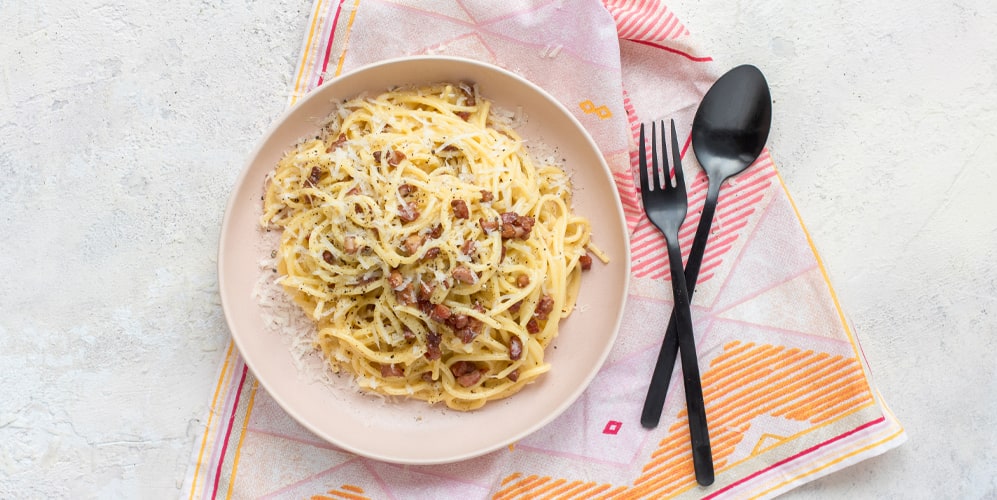
Why make homemade pasta?
Learning how to make fresh pasta is hugely rewarding for any foodie and leaves you with a great sense of pride afterward – especially when you see your family or friends tucking into a bowl of ravioli, tortelli or spaghetti that you have made.
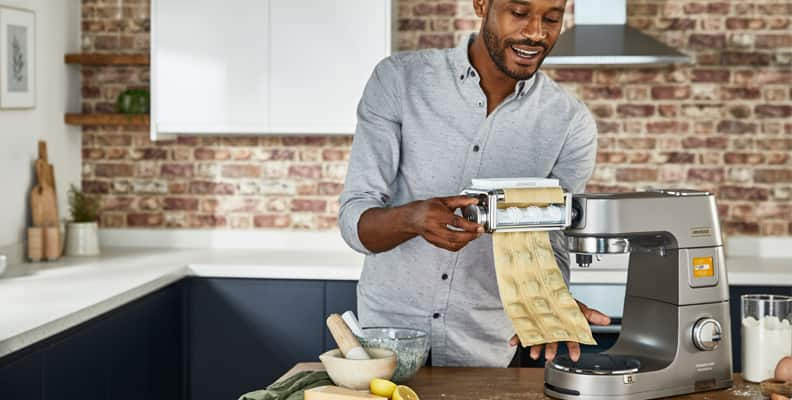

Once you have mastered the basics, you can start to experiment more and have fun with it.
As well as the standard pasta recipe, you can get creative, with home chefs using different natural ingredients to turn their pasta into a variety of colours. Squid Ink is used to turn your pasta black; Spinach makes it green; Tomato paste gives it an orange hue; and Beetroot results in a vibrant purple colour.
Adding these ingredients to your dough will also allow you to test out different flavours. Other things to try include:
Freshly chopped herbs, such as basil, parsley, or mint
Ground spices, such as turmeric, chilli flakes or paprika
Roasted peppers
Cocoa powder
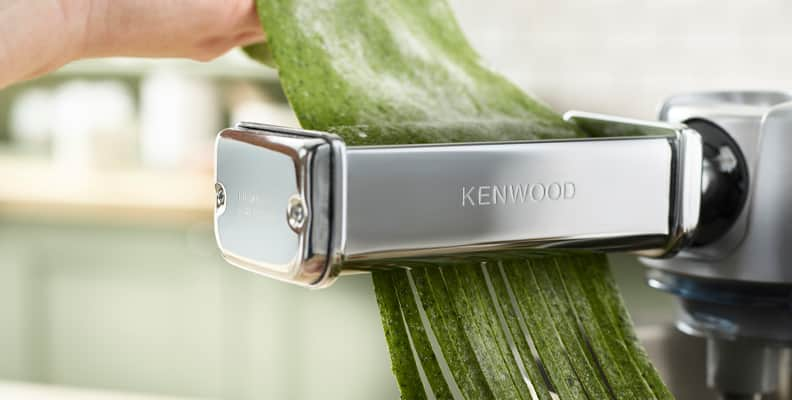
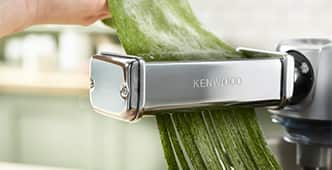
Pasta makers, cutters and shaper attachments for your food mixer can make this even easier and quicker.
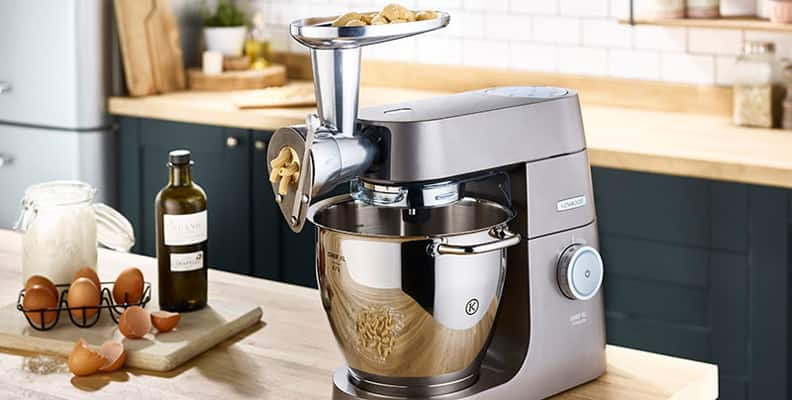
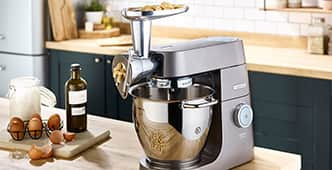
Homemade pasta ingredients

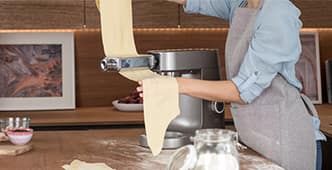
Different recipes have slightly different requirements, as you will see with the recipes we feature below, with some of them requiring additional optional ingredients such as olive oil (which can also help to bind your dough) or semolina.
When it comes to flour, some recipes simply use plain flour, whereas others suggest you use ‘Type 00’. This is a fine, white Italian flour used specifically for fresh pasta making. It is commonly sold in major supermarkets, but your favourite Italian deli or online food supplier will also stock it.
Several people start to experiment with mixing flours too. For example, using a mix of ‘00’ and semolina flour makes the pasta more robust than just using the more delicate pure ‘00’. Depending what type of sauce you are planning on using, you might want to try a different combination.
Homemade pasta equipment
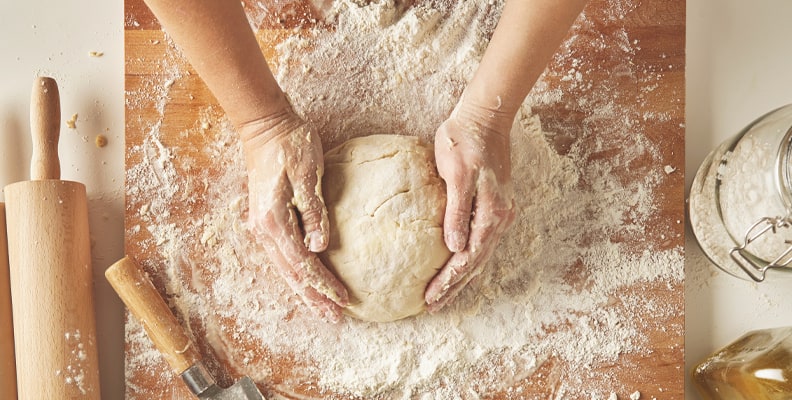
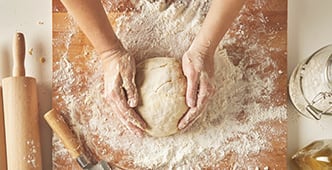
Taking this step further, you can use a mechanical pasta maker to help you roll the pasta dough to the required thickness.
To help speed up the dough-making part of the process is to use a food processor, rather than the fork method.
And another option which really helps you make your dough simply is to use a stand mixer. Not only will you be able to speed up the process of mixing the dough, but there are also a wide range of useful pasta attachments, including shapers, rollers and cutters.
A final optional piece of equipment is a pasta drying rack. These are typically wooden and look great in your kitchen with ribbons of fresh pasta drying on them.
Using a stand mixer means you will save time and effort, plus make less mess in your kitchen than if you just do it by hand.
1. To start, fit the dough hook to your stand mixer and add the ingredients into the bowl (depending on your pasta recipe)
2. Next use the speed setting 2 and mix for about 3 minutes. You are looking for a mixture that looks crumbly but is still moist. If it seems a bit too dry, then add a tablespoon or two of water, and if it seems too sticky, then add a little extra flour
3. Remove the mixture from the bowl, put it onto a floured large board and then knead it by hand until it becomes a smooth dough
4. Use your hands to form a ball, wrap the dough and let it rest at room temperature for at least 15 minutes (although this can be up to 2 hours if you need to do something else in the meantime)
5. Now it is time to turn your dough into pasta sheets. Start by rolling it out with a rolling pin into a flattened oval disc shape. Then take your flattened disc and feed it through the stand mixer pasta roller attachment, roller, changing the setting from 1 to 6 or 7 to get the right thickness (this is typically between 1-2mm). It can be rolled by hand or using a manual machine but once you’ve used the attachment on your mixer, you’ll realise how much easier it is. Alternatively, you can continue to roll it by hand
6. Once you have rolled out the pasta sheets, it can be cut into different widths to make lasagne, spaghetti, trenette or fettuccine using the different pasta cutters, or if you wish, you can cut by hand. It can also be used to make filled pasta such as ravioli or tortellini.
7. The last step is to dry the pasta for around 30 minutes, using a pasta rack or creating ‘nests’
How to make pasta by hand

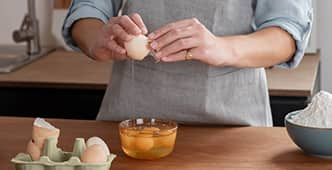
1. Take your flour and create a mound on your board or work surface. Make a well in the centre and add the remaining ingredients to the flour, using a fork to break up the eggs in the process
2. Use your hands to combine the ingredients until you have a rough ball of dough
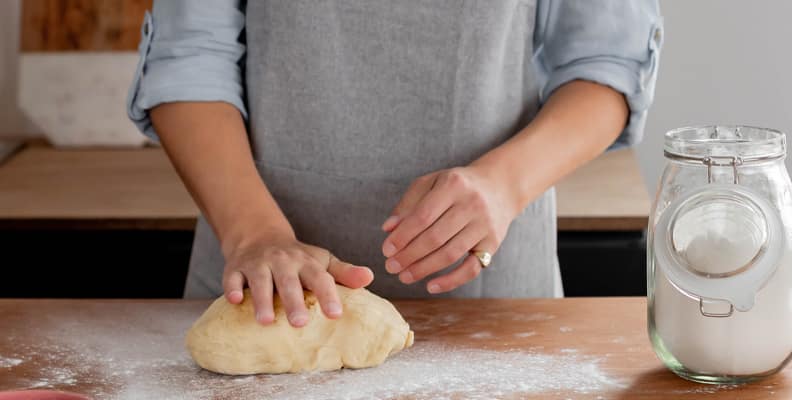
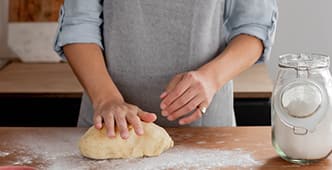
4. Wrap the dough and leave it to rest at room temperature for around 30 minutes
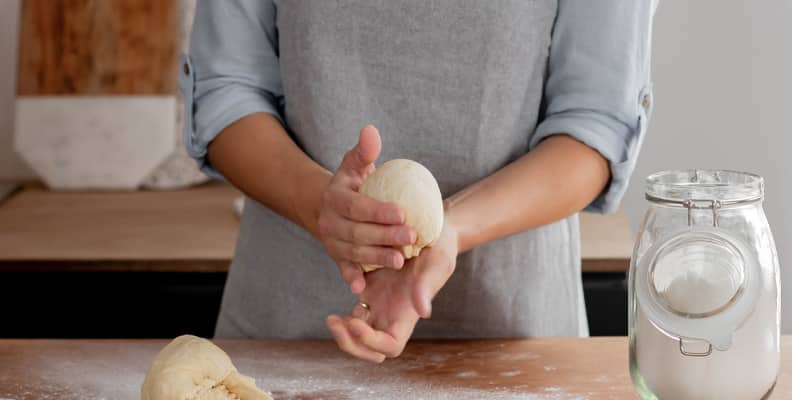
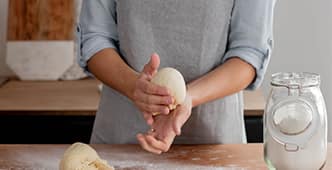
6. Use a sharp knife to slice it into ‘ribbons’ of different widths, depending on the type of pasta you want to make (for example, tagliatelle, pappardelle or fettuccine). Dust these with some flour to prevent them sticking
7. Finally, you need to dry your pasta, using a specific rack or by creating individual ‘nests’
How to cook fresh pasta
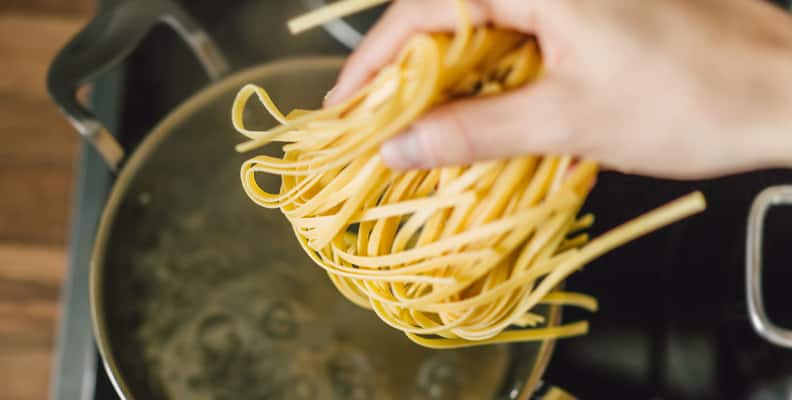
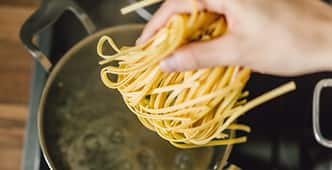
The key to remember with cooking fresh pasta compared to the dried equivalent, is that the length of cooking time is much shorter.
Depending on the thickness, it can cook in as little as 15 seconds, with many pasta types being ‘al dente’, what you should be aiming for, in around 2-3 minutes.
To cook your pasta, simply add it to a large pan of salted boiling water. Add the pasta, stir gently and bring it back to the boil. Then start timing your required cooking length.
Once cooked, drain the pasta immediately and serve as soon as possible.
Storing fresh pasta
As the name suggests, fresh pasta is best consumed soon after you have made it. You should put it into an airtight container and cook it within two days.
The good news is you can freeze uncooked fresh pasta for up to one month.
Once cooked, it’s likely to still be good the next day, if you’ve found you haven’t eaten it all or ended up making too much for one meal.
Nimensä mukaisesti tuorepasta kannattaa nauttia pian sen valmistamisen jälkeen. Pane se ilmatiiviiseen astiaan ja kypsennä kahden päivän kuluessa. Keittämätön tuorepasta säilyy pakastimessa noin kuukauden ajan. Kypsennettyä pastaa voi todennäköisesti syödä vielä seuraavana päivänä, jos kaikkea ei tule kerralla syötyä.
Kun valmistat itse tuorepastaa, voit kokeilla vanhoja suosikkiruokalajejasi tai aloittaa uusia pastaperinteitä perheen kesken. Valmistamalla tuorepastaa itse voit asettaa luovuutesi koetukselle ja kokeilla mitä moninaisimpia makuja. Ja entistä mielenkiintoisempaa luovasta tuorepastan valmistuksesta tulee, kun kokeilet lukuisia tuorepastareseptejä.
Yksinkertaisista klassikoista, kuten spaghetti bolognaisesta, monimutkaisempiin ruokalajeihin, kuten prosciuttoa, ricottaa ja parmesaania sisältäviin tortellineihin hernepestolla tarjoiltuna – pastareseptejä on helppo muokata, ja niissä on lukuisia lihattomia vaihtoehtoja.
Tässä on joitakin suosikkejamme:
Carbonara
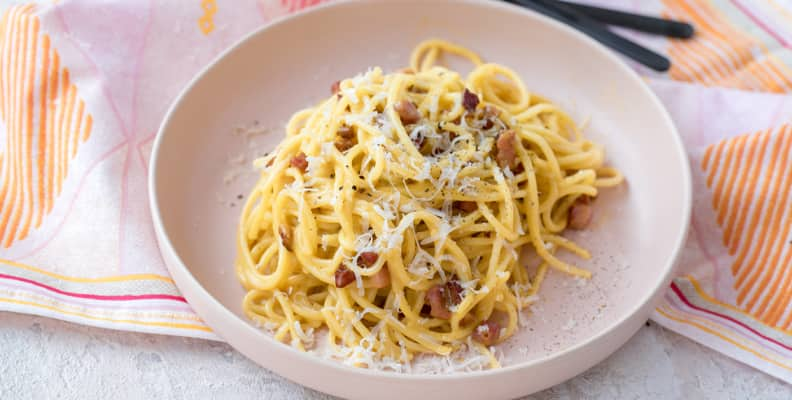
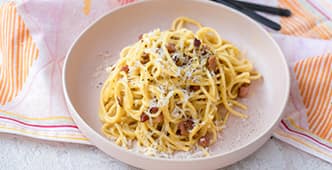
Get the recipe
Chicken pesto roll-up lasagne
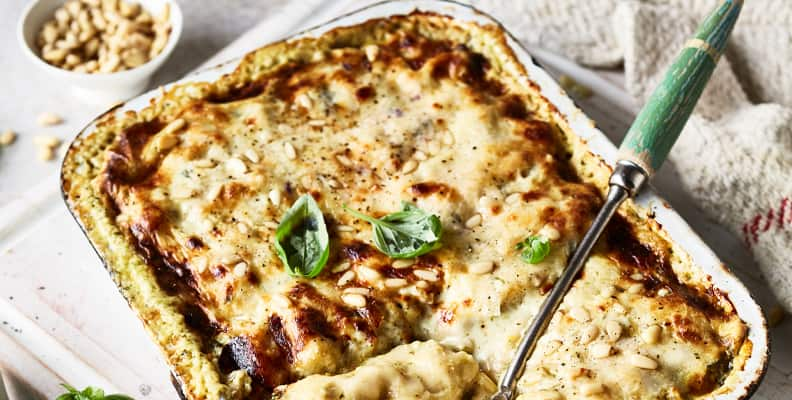
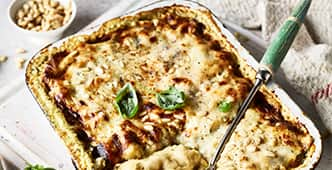
Get the recipe
Squid ink pasta with scallops
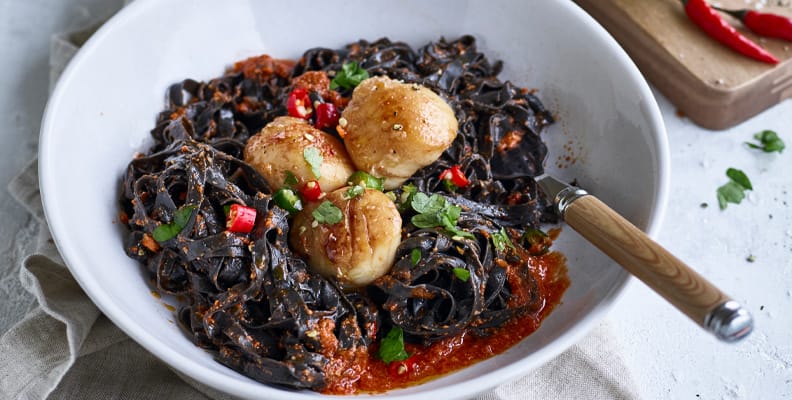
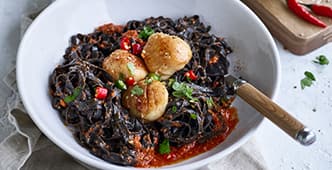
Get the recipe
Spinach and ricotta tortellini
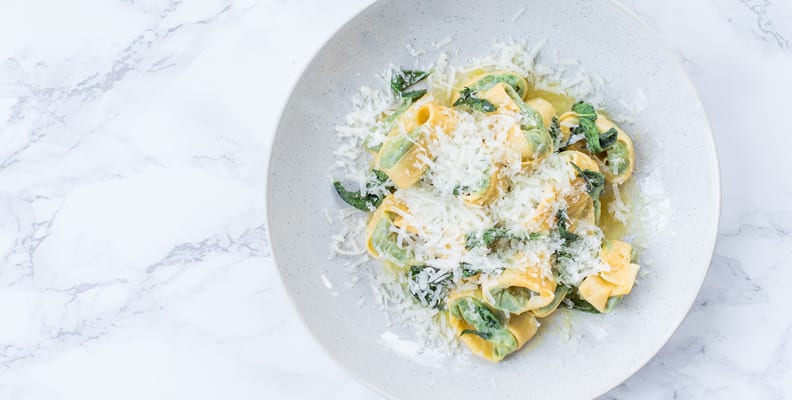
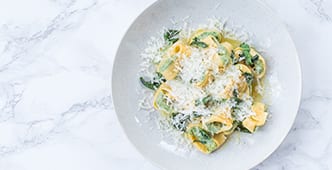
Get the recipe
Raviolis au crabe


Obtenir la recette
FAQ sur la fabrication des pâtes
Cet article vous a, nous l’espérons, fourni beaucoup d’informations sur la fabrication de vos propres pâtes. Toutefois, vous trouverez ci-dessous un résumé des principales questions fréquemment posées.
Quelle farine est la meilleure pour faire des pâtes ?
Il est communément admis que le type de farine le plus adapté à la préparation de pâtes fraîches est la « 00 ».
Il s’agit d’une farine blanche, et le double zéro fait référence à la grossièreté de la texture. La farine simple zéro (« 0 ») est grossière et la triple zéro (« 000 ») est fine, la « 00 » se situant au milieu.
Comme mentionné ci-dessus, vous pouvez trouver de la farine « 00 » dans les grandes surfaces alimentaires, les épiceries italiennes et les magasins alimentaires spécialisés, ainsi que chez les revendeurs alimentaires en ligne.
Devez-vous utiliser des œufs ou de l’eau dans vos pâtes fraîches ?
À moins que vous ne prépariez des pâtes végétaliennes, les œufs sont la meilleure solution car ils hydratent les pâtes.
Les œufs aident à créer le réseau glutinique pour une bonne structure et une bonne forme de la pâte. Ils permettent également de rendre la pâte lisse et soyeuse.
Certaines recettes de pâtes fraîches utilisent de l’eau au lieu d’œufs, ce qui semble remonter à l’époque du rationnement qui a suivi la Seconde Guerre mondiale, où les œufs étaient rares.
Sélectionner la bonne forme de pâtes
L’un des aspects les plus intéressants des pâtes est la grande variété de formes qu’elles peuvent prendre. Cela signifie que vous pouvez vous amuser pendant des heures à faire des expériences en cuisine.
Pour associer la bonne forme de pâtes à la bonne sauce, il convient de suivre quelques règles :
| La forme des pâtes | Le type de pâtes | La sauce idéale |
|---|---|---|
| Longues et fines | Spaghettis, linguines, vermicelles, bucatinis, cheveux d’ange, reinettes et fideos | Sauces à base de tomates, de crème ou d’huile |
| Longs rubans | Lasagnes, pappardelles, tagliatelles, fettuccines | Sauces à la viande ou sauces crémeuses |
| Tubes | Pennes, rigatonis, macaronis, tubinis, pennes rigates, zitis | Sauces aux légumes, bolognaise, ragoût |
| Torsades | Fusillis, rotinis, campanelles, gemellis | Sauces légères et lisses, notamment le pesto |
| Coquillages | Conchiglies, pipes rigate, cavatellis | Sauces à la crème ou à la viande |
| Pâtes garnies | Tortellinis, raviolis ou tortellonis | Sauces légères au beurre et à l’huile |
| Mini-formes | Orzo, anellis, orecchiettes, tripolinis | Soupes, plats mijotés ou salade de pâtes |
Les accessoires à pâtes pour les robots sont très utiles, car ils peuvent vous aider à créer facilement un certain nombre de formes différentes.
Est-il possible de congeler des pâtes fraîches non cuites ?
Les pâtes fraîches non cuites peuvent être congelées si nécessaire.
Lorsque vous les avez préparées, laissez-les sécher pendant environ 15 à 30 minutes, puis conservez-les dans une boîte hermétique au congélateur. Vous pouvez également congeler la pâte avant de la rouler et de la couper : prêt à sortir pour créer un repas facile et rapide quand vous en avez besoin.
Comme la plupart des aliments surgelés, il vaut mieux les consommer dès que possible, de nombreuses personnes suggèrent qu’elles ne doivent pas être congelées pendant plus d’un mois.
Vous pouvez les décongeler pendant quelques heures au réfrigérateur, ou les cuire toutes droit sorties du congélateur. Gardez simplement un œil sur le temps de cuisson, qui devra être un peu plus long.
Prêt à faire vos propres pâtes ? Commencez avec Kenwood.
Maîtriser la réalisation de pâtes fraîches aussi bonnes que belles est très gratifiant. Vous pouvez varier les saveurs, les formes et les couleurs !
Il vous faudra acquérir le « coup de main », mais l’utilisation d’un robot pâtissier multifonction vous facilitera la tâche.
Il existe une variété impressionnante de recettes à essayer et, plus important encore, à déguster. Quelques recettes qui pourraient vous tenter :
Tagliatelles courgette et tomate
